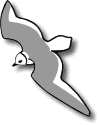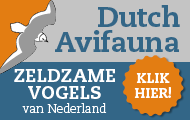ROBIN RESTALL, CLEMENCIA RODNER & MIGUEL LENTINO
2006. Birds of northern South America: an identification
guide. Volume 1: species accounts; volume 2:
plates and maps. Christopher Helm/A&C Black
Publishers Ltd, 38 Soho Square, London W1D 3HB,
UK; e-mail ornithology@acblack.com, website www.
acblack.com. Volume 1: 880 pp, ISBN 0-7136-7242-0,
GBP 60.00; volume 2: 656 pp, ISBN 0-7136-7243-9,
GBP 40.00.

DB 2007:3
Central and South America (the Neotropics) constitute
the most species-rich bird region on earth. The northernmost
part of South America (Ecuador, Colombia,
Venezuela and the Guyanas) takes a prominent position
within the Neotropics and is home to a stunning
2300 species. Good field guides exist for most of the
separate countries in northern South America but now
we have one for the whole area, including the islands
near Venezuela (Aruba, Bonaire and Curaçao, Trinidad
& Tobago). It is a pleasure to examine this new guide
by Restall and his colleagues Rodner and Lentino and
to consider what it has to offer birders visiting South
America.
At first sight, one might be tempted to ask why we
need another field guide for an area already well
covered with country-specific field guides. This is particularly
so as two other countries in South America with
enormous bird lists, Brazil and Peru, still don't have
comprehensive field guides but only 'extended illustrated
checklists' (although the one for Peru is quite
good). As a result, the greatest need for a new field
guide would have been in those two countries but we
will have to wait a little more for that. Another approach
would have been to extend the idea behind
Fjeldså & Krabbe's Birds of the High Andes (1990) - in
other words, a field guide for a bio-region instead of a
country. In this context, the obvious choice would have
been a field guide for the Amazon basin, covering
much of Brazil and touching most of the other countries
of South America. However, a visiting birder to
many of these countries would still need at least two
field guides (one for the Andes and one for the
Amazonian lowlands).
As Restall, Rodner and Lentino are all based at the
Phelps bird collection in Venezuela, the choice of the
northern countries of South America is a logical one.
Moreover, this area offers an excellent cross-section of
Neotropical habitats, and many birders who first visit,
say, Venezuela will probably, sooner or later, also want
to visit Ecuador or vice versa. Having more species in a
field guide than you need for a single country may
appear rather bulky. However, this is only a minor disadvantage
compared with the benefits of its broader
scope concerning distribution and related species, and
the possibility of using the same field guide in another
country. Moreover, the distribution maps extend well
into Brazil (down to the Amazon river), so this field
guide will be of use in northern Brazil as well, although
no additional Brazilian species or subspecies have
been covered.
Restall depicts far more subspecies and plumages
than all other field guides of northern South America
combined, and this is a magnificent achievement.
Volume 2 (plates and maps) has c 6400 (!) bird illustrations,
which means an average of 2.8 illustrations
per species. Given the abundance of subspecies in the
area, this is still not sufficient to cover all subspecies
but Restall's aim (page 9) was to depict every 'visually
distinct' plumage or subspecies of the 2300 species. In
my opinion, the author should have given a fuller explanation
of the criteria for this 'distinctiveness' and for
the choices that inevitably had to be made. I conducted
a brief review of this question for two parts of the
region which may be of special interest to Dutch
birders because of the past or present ties with the
Netherlands, ie, Aruba, Bonaire and Curaçao (the ABC
islands) and Surinam. For the ABC islands, Voous (Birds
of the Netherlands Antilles, 1984, page 13) mentions
19 endemic subspecies which are also described in
Restall's guide; 13 of these are depicted in the new
guide. Of the six ABC endemic subspecies which are
not depicted, some are not 'visually distinct' but others
(like Barn Owl Tyto alba bargei, a remarkable small
subspecies restricted to Curaçao) should have been
incorporated in the new guide. For Surinam, I counted
(in the annotated checklist which the authors published
in 2000 as a basis for this new field guide) c 33 passerine
subspecies which occur in Surinam but not in
Venezuela, Colombia or Ecuador. Of these 33, only 12
are depicted in the new guide. Although I am willing to
believe that the other 21 are not very distinct, this still
leaves a faintly uneasy feeling. In any case, I hope that
the omission of some subspecies illustrations for the
ABC islands and Surinam is not simply the result of a
lack of specimens in the collections visited by Restall.
He visited several collections in the Americas but not,
for example, the collection in Leiden, the Netherlands.
Restall admits with regret that he could not visit all the
collections he wished but the coverage is considerable
and all the more remarkable given the fact that he had
to pay all of his travel expenses out of his own pocket!
Anyway, volume 1 (the species accounts) contains a
clear description (much better than in the other field
guides) of all subspecies of the area, so this successfully
complements the content of volume 2. It cannot be
emphasized too strongly how important a good knowledge
of subspecies is for birders - particularly in the
Neotropics where so many species may be split in the
future. This new field guide is of enormous value for
this reason alone, and it may also encourage scientists
and birders alike to discover new subspecies.
When a birder visits northern South America for the
first time, there is an inevitable concern about the
weight of the necessary field guides. This is, of course,
mainly a consequence of the spectacular bird diversity
in those countries. Nevertheless, it helps the birder
sweating on an Andean hill slope if the weight can be
kept low. For example, Steve Hilty's thorough single
volume field guide for Venezuela (2003) is a heavy 1.9
kg (and is 4.6 cm thick). Other field guides have become
so bulky that authors have opted to split them
into two volumes - with one being the true field guide
and the other more a reference work to consult on your
desk or in the car. The field guide for Ecuador (Ridgely
& Greenfield 2001) was the first to adopt this strategy,
and Restall et al follow the same path. As the field
guide volume for Ecuador is still 1.6 kg and 5.0 cm,
Restall's field guide volume at 1.4 kg and 3.4 cm has
the merit of being more compact - particularly given
the far greater number of species and subspecies covered.
Another significant advantage for the user of this
volume is that Restall has helpfully chosen to put all
the identification information in volume 2 on the plates
themselves. Unlike many other field guides, therefore,
the plates include the distribution maps (with an
approximate location of subspecies too), plus codes for
altitudinal range, status, and abundance, and often a
few additional diagnostic remarks, mostly about habitat
or habits.
If there is any criticism of volume 2, it is that there is
no indication of the sound, although I would be the
first to admit that nowadays in the field we rely far
more on prepared mp3 or minidisk collections for this
purpose than on textual descriptions of bird sounds.
Moreover, the sounds are amply described in volume 1
and Restall is to be praised for including a huge discography
(compiled by Shaun Peters), identifying where
which sound of each species can be found. Volume 1
(1.9 kg and 4.6 cm) also naturally contains more detail
on habitat, habits and details about identification, subspecies
and status. The frequently included and very
practical separate section on 'similar species' is lacking
in this guide but this information has been well incorporated
into the identification paragraph. Nevertheless,
both this 'similar species' feature and the diagnostic
sounds might have been coded somehow in volume 2
too.
What about the quality of the bird illustrations? Most
birders will agree that the finest bird illustrations for
South America are those by Guy Tudor in the passerines
handbook The birds of South America (Ridgely
& Tudor 1989, 1994). Although only a cross-section of
the full range of species was illustrated there, the quality
of Tudor's plates is so outstanding that one would
inevitably have liked all the species (and subspecies) of
South America to be covered by this same artist and
with the same refinement - but this, of course, would
take an enormous amount of time. When compared
with the quality of the plates in the field guides for
Colombia, Ecuador and Venezuela, Restall's illustrations
are actually pretty good. Indeed, I found many
instances of well-known species where Restall's illustrations
seem more accurate than in any of the other
field guides (with the Ecuador guide as second best). As
Restall puts it himself (page 13), the birds are shown in
a 'strictly comparative style, somewhat ritualized', but
we are familiar with this technique from other field
guides like that of Mexico by Howell & Webb (1995)
and Ecuador. Birds may not always be shown in an
entirely typical posture but the uniformity of Restall's
illustrations (he painted all 6400 illustrations himself!)
is better than the big differences between plates in for
instance Hilty's Venezuela field guide. There is only
one bird family where I think that the birds are not lifelike
enough, and these are the thrushes: in my opinion
they are too thin. However, this does not make any
difference for the identification. A welcome feature of
Restall's plates is the uniform scale employed for each
family, which helps to judge the relative size of a bird
in the field by comparing it with those family members
with which you are familiar.
All in all, I think that for birders visiting any of the
countries in northern South America, this new field
guide is the best option. Only when you are sure you
will never visit any of the other countries covered
(hardly imaginable), or when you would stay a very
long time in only one country, would it be better to
stick to the single country field guide. Visiting birders
should always have volume 2 in their bag, and volume
1 should be within easy reach in the vehicle, in your
room, or even better, in the bag of a companion. In any
case, do bring a sound collection as well. And then go
and find that yet undescribed (sub)species! JOHN VAN
DER WOUDE
15110 views
Reacties:







